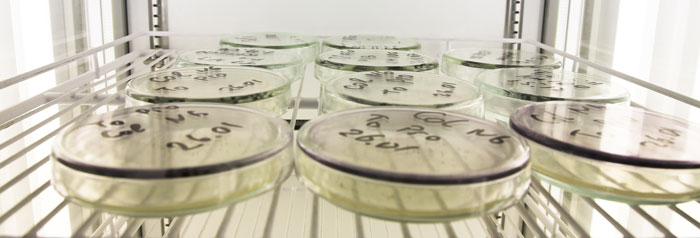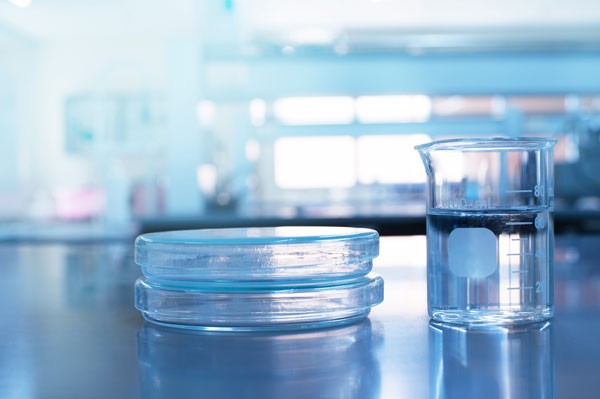Water is capital on animal nutrition, as it is the main quantity of feed that animals are taking. So, for that reason, we must ensure high-quality microbiology parameters that will avoid animal´s health problems and will ensure a good maintenance of our water pipes system.
WATER, MOST IMPORTANT ELEMENT.
Water represents from 2 to 3 times more quantity than solid feed that animals are going to take during their lives. Water is an infection vector for different pathogenic microorganisms. These microorganisms are going to cause subclinical difficulties that will reduce our profits.
MICROBIOLOGICAL INDICATORS IN WATER ANALYSIS.
There is no either legislation or microbiological requirement for livestock water intake in Spain, so in general, we advise you to follow European legislation R.D 140/2003. In case of countries outside of European Union, please follow their specific regulations or use human consumption ones as reference. R.D. 140/2003 establishes sanitary criteria on water quality for human consumption and it sets microbiological indicators with the next main limits:
1- Colony count at 22ºC : 100 CFU/1ml
2- Total Coliforms: 0 CFU/100ml
3- Escherichia Coli: 0 CFU/100ml
4- Enterococcus : 0 CFU/100ml
5- Clostridium perfringens : 0 CFU/100ml
Colony count at 22ºC or Mesophilic Aerobic bacteria will provide us with a general idea of how contaminated our water is. These microorganisms are easily found in waters with unspecific contamination. They are not pathogenic in general terms, although the higher their presence is the worse you are taking care of the water system. You will probably have open water containers and pipes. Total Coliforms (includes enterobacteria), E. coli and Enterococcus, allow us as a marker of faecal contamination, each one has its particularities. We will find Clostridium perfringens and another faecal indicator, it belongs to the current intestinal flora, it is not pathogenic in normal conditions. Although, if there is a massive proliferation it will become pathogenic causing Necrotic Enteritis in poultry caused by Clostridium perfringens. Also, this bacterium is related to biofilms on pipes, so its presence harms animals’ health and the farm’s economy.
OTHER RELATED BACTERIA.
- SALMONELLA.
Salmonella has different ways of getting into the farms, it is generally accepted that Salmonella entrance is due to animals as external birds and rodents get access to the buildings indoors hence bacteria is spread. In the same way, bacteria can use water as an entrance and transport vector, although it is well known that Salmonella is not comfortable in the water, especially in replication terms. In that case, we must highlight biofilms in which this bacterium has an important presence, so this is a point on which we will have to pay special attention. Regarding its pathogenicity, clinical and subclinical infections will have an important negative economic impact, furthermore, we must take into account that Salmonella is a zoonotic illness.
- PSEUDOMONA AERUGINOSA.
This is a microorganism that suits water media perfectly and it is going to have an important presence on different animal species and different production stages. It could result insidious and difficult to eliminate, and has an important presence in biofilm.
- CAMPYLOBACTER.
This is also a microorganism that suits water media, it is an avian gut colonizer. It doesn’t have special importance on animals’ health, but it has more importance on human worldwide health as it is a zoonotic microorganism.
- BORDETELLA AVIUM.
As the previous microorganism, Bordetella Avium also suits water media perfectly, this microorganism can get into our farms through the water system and after that, it could be transmitted by aerial media due to it is highly contagious. It can have a high negative economic impact on our farms as it produces respiratory symptomatology and hence it alters our avian productive/economical results.
 OTHER WATER RELATED PATHOGENS.
OTHER WATER RELATED PATHOGENS.
- PROTOZOA.
Protozoa as Acanthamoeba has a traditional water treatment extreme resistance as the water treatment is based on Chlorine. These microorganisms can provoke a variable clinical picture with intestinal and neurological damage. Furthermore, we have to be especially cautious with them because they can act as a way of transport for other microorganisms as:
- Virus (Adenovirus, Enterovirus)
- Bacteria (Campylobacter, E. Coli, Salmonella, Staphylococcus)
- Protozoa (Cryptosporidium)
By last, we want to highlight Cyanophycean algae which proliferate with sunlight, these algae provide protection and nutrition to Cyanobacteria which causes toxins generation as Microcystins, Saxitoxins, Anatoxins, etc. Toxins will cause intoxications by water drinking, so we must be especially cautious on control with this kind of water which is on open tanks and sunlight incidence. Algae presence is easily identifiable as water has a greenish colour and a slippery feeling to touch on tank borders.
- BIOFILM.
Biofilm is a bacterial population that covers a certain surface, whose main components are microorganisms and mucopolysaccharides. It will be formed as more or less continuous aggregates and variable in thickness that will end up being very difficult to detach, thus it generates an irregular surface that will make it easier for other bacteria to continue adhering. Also, it changes capable to change the physicochemical conditions of its environment, so it will favour the addition of other microorganisms that would not naturally be found there.
Biofilm formation is composed of different predisposing factors, but we must understand that the microbiological load of the water is one of the most important, it will always be formed when microorganisms find humidity and nutrition, water is the ideal medium. There are many problems associated with biofilm, as if we make our water go through pipelines with already biofilm presence, we will be contaminating the water, since the biofilm acts as a reservoir for a multitude of pathogenic microorganisms.
In BBZIX we make a special effort in prevention both to avoid problems associated with poor microbiological water quality and to prevent biofilm. We recommend you use Aquazix Plus Ag continuously since it improves water microbiological quality, elimination of biofilm, and prevention of calcium deposits. We will ensure maximum intestinal health for our animals and, therefore, better economic results on our farms.






